As an Amazon Associate I earn from qualifying purchases.
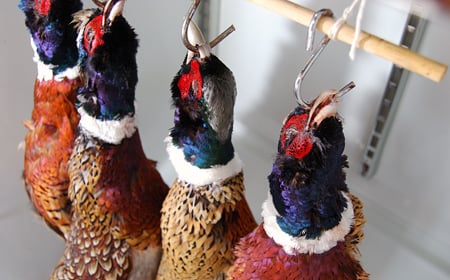
I have for several years recoiled at the idea of hanging game birds. The idea of hanging shot pheasants or partridges undrawn and in the feathers for days and days just did not seem terribly hygienic or sane to me. Old texts wax rhapsodic about the sublime flavor of “high” game, which usually means pheasants and usually means birds that have hung for more than a week. This, I decided, was madness.
I was wrong.
I apologize for not posting in nearly a week, but life has been busy and I am in the middle of two experiments: One involving a pig’s head and various offal I will write about soon. The other has been a systematic look at the science of hanging game birds.
Nearly everyone who reads this space would probably agree with me that dry-aged beef is the finest expression of that meat. It is concentrated, savory and tender — and very expensive because dry-aging necessarily means a layer of crusty, slightly moldy ick on the outer edges of the meat. This is cut off before selling or serving.
Hanging beef — and especially venison — is important in part because beeves tend to be dispatched at about 18 months to 2 years old, old enough to get a tad tough on the teeth. A whitetail buck sporting trophy antlers is likely to be 3-6 years old. Why not hang pork, you say? Hogs are slaughtered young. Ditto with domestic chickens. Young animals are already tender, so that aspect of aging isn’t needed.
Enter the pheasant. A pheasant really is a “ditch chicken.” It is a close cousin of the domestic chicken and when eaten fresh has, as Brillat-Savarin puts it in his The Physiology of Taste, “nothing distinguishing about it. It is neither as delicate as a pullet, nor as savorous as a quail.” Those who have eaten fresh pheasant — and by fresh I mean un-hung — can’t help but thinking: “So what? This just seems like a slightly tough and slightly gamy chicken.” They’re correct, especially with farm-raised birds or those shot at a game preserve.
Plucking a pheasant is also less than a joyful experience, so I had shied away from them in favor of ducks, which are better tasting fresh and which pluck far easier. But our friend Peter invited us to the Camanche Hills Hunting Preserve last weekend to chase pheasants, and after about 6 miles of tramping around, we managed to put four birds in the bag.
Now after the Adventure of the Unkillable Pheasant, I was ready to get down to some serious pheasant business. That bird I did not hang, and while it came out well roasted simply, I knew there had to be something more to what LP De Gouy calls the “king of game birds … wild pheasant deserves a profound veneration.” I reckoned it must be in the hanging.
I put our four pheasants in the salami fridge, which is set at 55 degrees. One had a big open spot on it where the breast skin had been ripped, so that bird I plucked after just one day. More on him later.
* * *
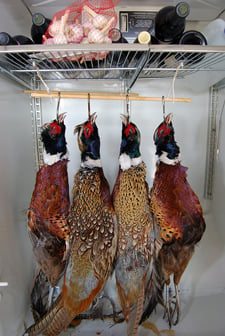 Off to the library. One of my idiosyncrasies (I have many) is that I collect game cookery books. I have many, and several discuss hanging game birds.
Off to the library. One of my idiosyncrasies (I have many) is that I collect game cookery books. I have many, and several discuss hanging game birds.
The great Jean Anthelme Brillat-Savarin doesn’t give a timetable, but says, “the peak is reached when the pheasant begins to decompose; its aroma develops, and mixes with an oil which in order to form must undergo a certain amount of fermentation, just as the oil in coffee can only be drawn out by roasting it.” Sounds pretty hardcore.
Roy Wall wrote in 1945: “The flesh of either wild game or domesticated animals and fowl can certainly be improved by aging, but it is my opinion that there must be a limit to the aging process…aging in the open air for 10 days or a month, according to weather conditions, is, in my opinion, most beneficial to domestic and wild meat alike.”
Don’t freak out. Roy doesn’t specify what game he’s talking about there, and aging an old buck deer in proper conditions for a month isn’t such a crazy idea, although I’d prolly cut it down after two weeks. More recently, Clarissa Dickson Wright — one of the Two Fat Ladies, my favorite TV food personalities — says of pheasant: “Hang it you must, even if for only three days, for all meat must be allowed to rest and mature.” Clarissa’s preference is a week to 10 days.
The current Authoritative Source on All Things Meat is Englishman Hugh Fearnley-Whittingstall, who in his River Cottage Meat Book says “four or five days would be about right for me” if a bird is hung at 55 degrees.
This is what the food writers say, but to me that’s only a piece of the puzzle. What about science?
* * *
Fortunately science exists on the topic of hanging game birds. My best source is an Australian government publication that did some rigorous experiments. For example:
Pheasants hung for 9 days at 50°F have been found by overseas taste panels to be more acceptable than those hung for 4 days at 59°F or for 18 days at 41°F. The taste panels thought that the birds stored at 59°F were tougher than those held for longer periods at lower temperatures. Pheasants hung at 50°C became more ‘gamy’ in flavour and more tender with length of hanging.
Aha! One issue solved. Food writers rarely talk about temperature of hanging because most of them think about hanging pheasants outside, which is fine if you don’t live in California; even now it is too warm to properly hang game. It seems 50 degrees is ideal, and the 55 degrees my fridge is set at is acceptable.
Furthermore, an English study from 1973 found that clostridia and e. coli bacteria form very rapidly once you get to about 60 degrees, but very slowly — and not at all in the case of clostridia — at 50 degrees.
That same study found that field care of the birds is vital. Under no circumstances should you allow pheasants to pile up in warm conditions because doing so will slow cooling so much that the dead birds will develop bacteria in their innards. This is no bueno.
All the bacteria and taste tests converge on two things: 50-55 degrees and 3-7 days. That’s your takeaway, folks.
Left undiscussed is the importance of feathers and innards. Brillat-Savarin speaks about a mysterious “oil,” and Wall talks about bacterial decomposition. Here’s my take: The feathers provide protection for the skin against drying out during aging. Pluck the feathers right away and you can still age the bird, but the skin will be unacceptably dried out and unusable.
As for the guts, I am on the fence here. I think they do add something: Fish guts will affect the fillets because of the animal’s digestive enzymes. No reason to think land animals aren’t the same way, although at 50-55 degrees this is going to take some time to develop — for what it’s worth, a pheasant’s body temperature runs about 105 degrees.
Yet, when I plucked and gutted my pheasants this week I noticed two things: One, they were pretty dry inside, and two, the innards in three of the four birds looked fine and wholesome, not ratty and stinky. Maybe this je ne sais quoi does not appear until later.
* * *
All of which brings me to my own first experiments with hanging pheasants. Like I mentioned before, I had one damaged bird I let hang for only a day. This bird’s body was drier and tighter than a fresh-killed bird, and I dry-plucked it because of the damage.
This pheasant went into a pheasant and pork pie, which turned out to be an outstanding dish. Hat tip to Fergus Henderson for the inspiration on this one. How was the pheasant? I noted two things: One, the bird browned better (less moisture?), and it was more flavorful — even after just one day.
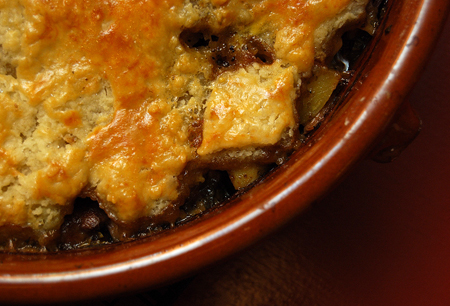
That left three birds. I plucked the next one at three days. This is the beginning of the sweet spot in the Australian study. I noticed that this bird was pretty limp, but there was no bad smell and the fat and giblets looked pristine. I was, honestly, pretty shocked. I jointed this bird because that’s what I do with most pheasants; the legs and thighs always need more time than the breast.
The aging really came into play with the breast. It was soft, not unpleasantly so, but definitely less firm than the day-old bird or a fresh one. Hmmm…
Then it hit me: These Camanche pheasants are pen-raised and have only been wandering around wild for days or weeks (months at the most). They were all young birds. I had originally planned to leave one bird for a full week, but scotched that idea immediately. I plucked the next two birds at 3 1/2 days and 4 days. I kept both whole.

A few things you should know. Don’t try to wet-pluck an aged pheasant as I instruct you to here. You must dry-pluck these birds because the skin gets looser and scalding did not seem to help one bit with the feathers. It was a major bummer to scald one bird and rip some of the skin. Dry-plucking, you should be warned, sucks. It takes forever, but is worth it for the results.
To eat the giblets or not? I’d say go for it for birds up to three days, if they have not been shot up. Any sign of ickiness in the innards and toss them at once. One way to tell if you are unsure is to render the fat the way you would with a duck. If it stinks, toss it.
So, to wrap up, here’s what I found:
-
Keep your birds as cool and as separate as possible in the field. Use a game strap, not the game bag in your vest. Separate your birds in the truck or put them in a cooler — do not get them wet!
-
Hanging your birds by the neck or feet does not matter, as several studies has shown.
-
Hang the birds between 50-55 degrees for at least three days, up to a week with an old rooster. Old roosters will have horny beaks, blunt spurs and feet that look like they have been walked on for quite some time. They will also have a stiff, heavy keelbone. Hen pheasants only need 3 days.
-
Do not hang any game birds that have been gut-shot or are generally torn up. Butcher these immediately and use them for a pot pie.
-
Dry-pluck any bird that has hung for more than 3 days.
-
Wash and dry your birds after you pluck and draw them. Only then should you freeze them.
There is a final test I have yet to do: Eat the birds. As this is Thanksgiving week and I am about to head out for a major duck hunt, this will have to wait. I will be sure to report back when I cook them. UPDATE: The birds were fantastic – much more interesting in flavor, a little gamey, but in a good way.

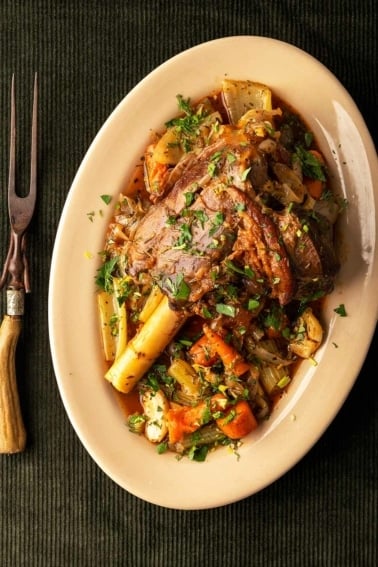
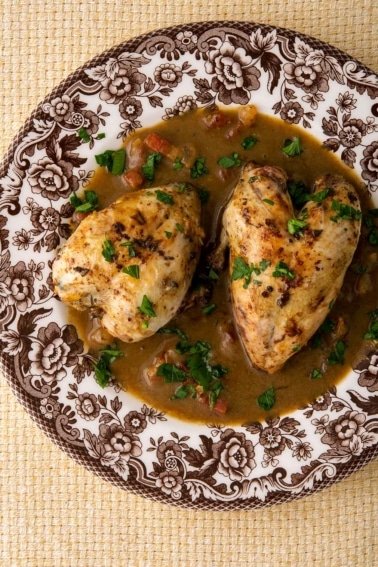
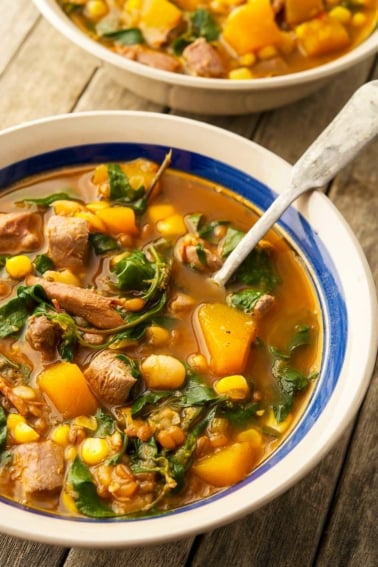
Matt: I will be facing the same thing next month. I plan on hanging outside where I can, then in the fridge when I can’t. Be nice to your host, though, and clean the fridge before you leave! 😉
Any suggestions for how to handle hanging birds on a trip to South Dakota? We’ll be there for 5 days, need the fridge where we stay to be at normal temp for our food, and will obviously get birds each of the days so the aging will vary. The temp outside can obviously vary tremendously from day to day and dawn to dusk. Thanks.
We have a wild pheasant hanging by the legs in the garage just short of a day. We’ve measured the temp at 60F and were wandering if cutting it down sooner rather than later would be a good idea? Also, your post has gotten me very exited about the whole affair, and I would love to know as much as I can about it. Any recommended reading?
This is an excellent article. Thanks so much. I live in Australia and we had our annual duck hunt last week. I have 4 plump woodducks in my fridge at the moment am wanting to eat them but am a bit unsure because this year we hung them guts and all overnight, it probably got down to 14 degrees C and a high of 20 C before I plucked, gutted and cleaned them up. Are we still good here ? anyone.? Tommy.
Very informative.
Thank you!
Daniel: That’s a little cold for proper hanging, but yes, I’d extend the hang time for a day or two when you are close to freezing. Make certain the birds do not actually freeze though!
I’ve read this and have found it very helpful, now my question is regarding temperature.
Hung in an outdoor shed, with a temperature of min 0 degrees Celsius – max 8 degrees, I’m thinking this will slow the hanging time, example: 5 days hanging takes 6 days,
Any ideas ?
I am going to receive a gift of a brace of pheasants tomorrow and as a virgin pheasant plucker have read this with great interest. I will inform you of my triumph/ disaster after the event.. Thanks for the tips on how to age the birds I am hoping to hang them for 5 days all being well though am unable to control the temperature, however it is cold. Not sure how to gut them though any tips?
Thanks
My son has a buddy who gave him mallard frozen whole with the guts in. Been frozen 2 weeks – are these still good? Should I thaw-pluck-gut-cook-eat, or thaw-hang-pluck-gut and eat? Also, can ducks be frozen with feathers and guts for a period of time?
Hi have killed my ducks and left them to hang , the backs of the ducks have gone lime green , can you let me know what i have done wrong ? left to hang in my loft.
Many thanks
sylvia
thank you for that article! now feeling a lot more comfortable ‘attacking’ the pheasants which the farmer left for me after his last hunting trip which have been hanging for three days. Looking forward to the results!
Very nice article!!!
Cathy: Freezing temperatures are too low for hanging, and can damage the meat texture. So I’d take pains to keep it from freezing…
Simone: I would not hang the duck more than a couples days, the partridge more than 3-4 days, and the pheasant more than a week. Yes, you need to gut the birds before freezing. For the duck, you will need to pluck it for a roast, but you can skin the partridge and pheasant if you are planning a casserole.
Hi there
Great site and info. A quick question. My husband and I were out for dinner last night (Saturday) when the manager mentioned he had some birds from a shoot from the previous day.He kindly gave us a duck, a partridge and two pheasants. Having no experience of this kind of thing we came home and found your site. The birds are currently hanging in our cellar (at approx 58 degrees). How long should I leave them there if at all and should they be plucked etc before freezing. I’m planning on roasting the duck and making a casserole with the pheasant and partridge. Thanks in advance for your advice.
Mr. Shaw,
I love your website and come here all the time. I am elated to say I shot my first turkey tonight. Now, I am wondering if I can hang it as you suggest in this article? Currently, I have it hanging by its feet in my shed. The shed will definatley not get warmer than 50 degrees, and is subject to potentially freezing. Am I going to ruin this bird? Any advice is very appreciated, thanks for all your help! (PS. This is in Montana with a Merriam’s turkey if it matters.)
Sarah: You should be fine. Low 30s is a little cold, but better too cold than too warm, right? I’d hang them in the shade, though. You’d be surprised at how warm things can get when they are in direct sunlight…